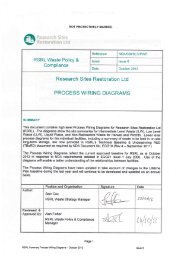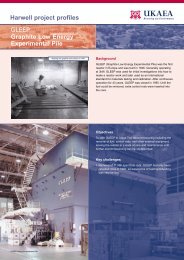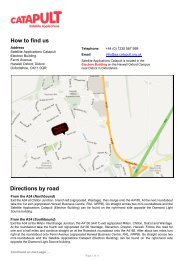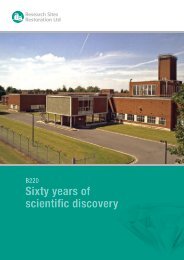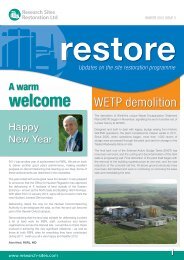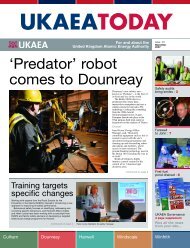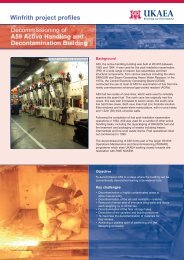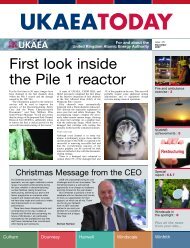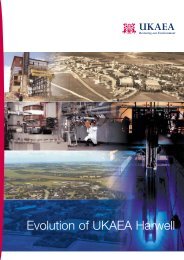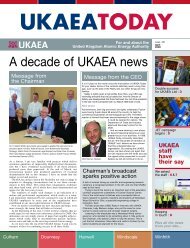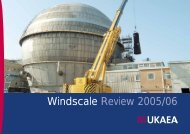RSRL Integrated Waste Strategy - Issue 5- Oct 2012.pdf
RSRL Integrated Waste Strategy - Issue 5- Oct 2012.pdf
RSRL Integrated Waste Strategy - Issue 5- Oct 2012.pdf
You also want an ePaper? Increase the reach of your titles
YUMPU automatically turns print PDFs into web optimized ePapers that Google loves.
NOT PROTECTIVELY MARKED113. The term BAT means the latest stage of development (state of the art) of processes, offacilities or of methods of operation which indicate the practical suitability of a particularmeasure for limiting discharges, emissions and waste. In determining whether a set ofprocesses, facilities and methods of operation constitute the best available techniques ingeneral or individual cases, special consideration shall be given to:a) comparable processes, facilities or methods of operation which have recently beensuccessfully tried out;b) technological advances and changes in scientific knowledge and understanding;c) the economic feasibility of such techniques;d) time limits for installation in both new and existing plants;e) the nature and volume of the discharges and emissions concerned.114. The Best Available Technique for a particular process will change with time in the light oftechnological advances, economic and social factors, as well as changes in scientificknowledge and understanding.4.1.1 Option Studies115. <strong>RSRL</strong> has a procedure for carrying out option studies for the assessment of wastemanagement options against a range of attributes and criteria looking at long and short termimpacts of each option. Preparatory work includes identifying the attributes, constraints, andrisks for the waste stream, and gathering sufficient information to ensure that realisticoptions for its management are identified. Information gathered to identify available optionsincludes current best practice techniques which have been applied elsewhere, new or noveltechniques which have been developed, and any “blue skies” research ideas that may berelevant.116. The procedure for option studies provides a minimum list of attributes to ensure that,regardless of waste type, there is consistency in the consideration of relevant attributes.Attributes include legislative requirements, radiological safety, waste volume andminimisation, technical feasibility, operational constraints, resource requirements,timescales, and cost. However, the procedure does not preclude the use of additionalattributes that may be applicable to a particular study. Workshops are used to analyse theavailable options against each attribute, which is weighted to reflect its importance to thegroup of stakeholders involved. Each attribute for each option is scored, and when theseare totalled the option with the least environmental impact is identified for that particularwaste stream. Sensitivity analysis of the results are undertaken to ensure that one or moreattributes are not disproportionately affecting the result.117. Each site has a preferred strategic options study which covers all the waste being storedor expected to arise during decommissioning. This allows interrelationships betweendifferent waste streams to be recognised so that a consistent strategy for similar wastes canbe developed. Specific studies are also carried out as required.4.1.2 Decommissioning <strong>Strategy</strong> and Studies118. Decommissioning <strong>Strategy</strong> documents for both Harwell and Winfrith were produced in2011 and have recently been updated to reflect changes approved by NDA as part of the<strong>RSRL</strong> IWS (<strong>Issue</strong> 5 – <strong>Oct</strong>ober 2012)34




